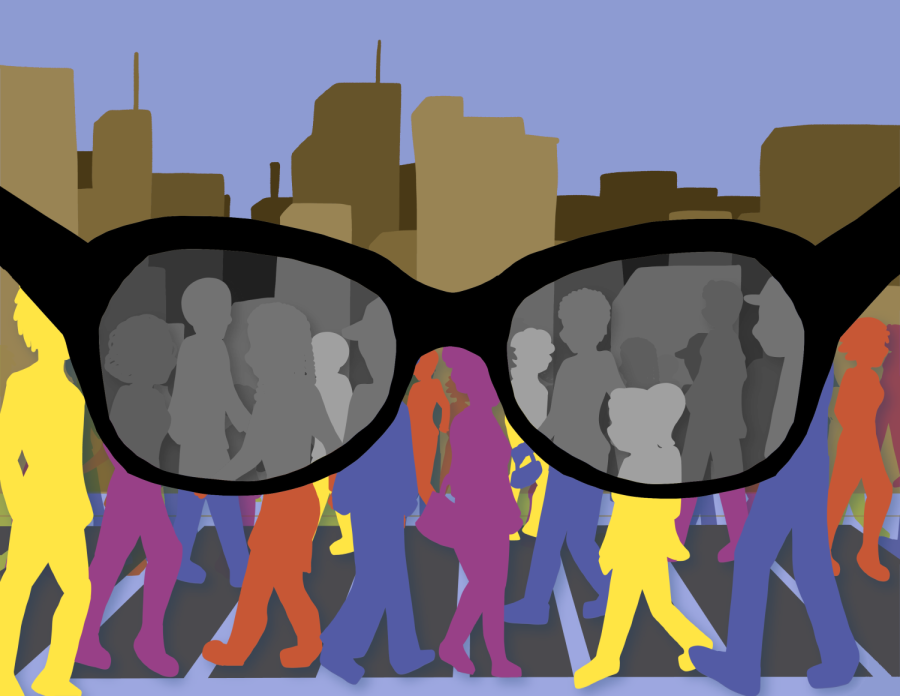[Opinion] Critical Race Theory must be taught in schools in order for students to understand and change systemic racism
Critical race theory encourages people to look outside the lens of systematic racism.
February 22, 2022
When TikTok influencer and history teacher Cody Pogue asked his students to list 10 non-white figures in United States history, they were only able to name three. When asked to name 10 Hispanic figures from U.S. history, the number shrunk to two, with both of those figures being villains of history rather than heroes or activists. It also became evident to Pogue that while his students were not able to name any Hispanic figures that were represented positively, they also could not name any white figures that were represented negatively.
The lack of historical knowledge displayed in Pogue’s classroom is nowhere close to being an isolated incident. These occurrences come as a direct result of the American school system refusing to teach its students the reality of our history through means of Critical Race Theory.
Critical Race Theory suggests that racism is part of a broader pattern in America. According to the Fair Fight Initiative, “Critical Race Theory posits that racism is implicitly woven into our laws, including the nature of policing and law enforcement in our communities. Drilling down to everyday life, this systemic racism impacts everything from hiring practices to home loans.” In summation, the theory teaches how society functions based on racial hierarchies and gives us the tools to address and resolve our country’s innate racial biases.
Conversation regarding Critical Race Theory evolved as a result of controversy surrounding the Civil Rights Act of 1964, which was established to help eradicate ingrained racial inequalities by ending Jim Crow Laws, desegregating schools and ensuring voting rights for Black people. Now in 2022, 58 years later, each of those goals still persist in some form, so it is undeniable that we are glossing over the obvious explanation as to why.
Although there is little to no evidence that Critical Race Theory itself is being taught to K-12 public school students, 22 states are currently planning to ban Critical Race Theory from grade school education with seven already signing it into law as of June 2021, including Arkansas, Idaho, Iowa, New Hampshire, Oklahoma and Tennessee.
Although America’s history provides our curriculum with extensive opportunities to educate students on topics like white supremacy, racial discrimination and racial violence, a 2019 study conducted by the Southern Poverty Law Center found that only 8% of high school seniors knew that slavery was the central cause of the Civil War.
The blatant racism is made clear with the mere fact that we are trying to limit the teaching of race when race is not even taught to begin with. By instead choosing to integrate our schools with Critical Race Theory, we may be able to eliminate the whitewashing of history that has been so profoundly entrenched in our education system.
On June 10, 2021, Florida’s State Board of Education held a meeting, prompted by Republican Gov. Ron DeSantis, in which they voted to adopt a new administrative rule banning Critical Race Theory.
This rule states that students should not be taught anything that is inconsistent with the board’s approved standards. According to the rule, this includes “teaching of Critical Race Theory, meaning the theory that racism is not merely the product of prejudice, but that racism is embedded in American society and its legal systems in order to uphold the supremacy of white persons.”
“I think [Critical Race Theory] will cause people to think of themselves more as a member of a particular race based on skin color, rather than based on the content of their character and based on their hard work and what they’re trying to accomplish in life,” DeSantis said at the meeting, according to an NBC News article posted on June 10, 2021.
DeSantis’ notion that people should not consider themselves as a member of their own race proves that to ignore Critical Race Theory is to allow people to become more colorblind. Statements such as “I don’t see color” and “There is only one race: the human race” are frequently used to dismiss the experiences and identities of people of color. By using these statements, you are denying people of color something that they cannot deny themselves of.
Unlike a white person, a person of color cannot just ignore their race. As proven by Critical Race Theory, their race contributes to the daily experiences that they have with encountering society’s institutions like as schools and law enforcement.
The use of these microaggressions comes as a direct result of a lack of education on the history of racial injustices in America. To have an understanding of Critical Race Theory would mean to know just how important it is to embrace, instead of ignore, people of color in America, as they face inevitable racial disparities in everyday social institutions.
White people have been using racism, through policy and legislation, to systematically benefit themselves from the very beginning of our country’s history. When this glaring racism finally became recognized as taboo-only after irreversible prejudice had deeply rooted itself in all aspects of social, political and economic life-we resorted to color blindness as an excuse to avoid addressing the vast societal inequality.
Opponents of teaching Critical Race Theory claim that the theory is used to create racial division by demonizing white people through the implication that all white people are oppressors. However, this is in fact not the case. The purpose of Critical Race Theory is not to state that all white people are bad people but to simply point out their inherent white privilege. Critical Race Theory is not a division; it is a call to action.
Unfortunately, our country has separated itself along racial lines from its very beginnings, and ultimately Critical Race Theory aims to fix that. The goal is to heal those divisions and help this country live up to the promises of freedom and equality enshrined in its Constitution.
White privilege is evident in everyday scenarios such as having a positive relationship with the police, being favored by school authorities and having the white race widely represented in education and the media.
Instead of ignoring these inherent biases, we should be using Critical Race Theory to teach students that if you have privilege to use, you should use it to help those without. It is about changing a narrative and recognizing stories that have often gone untold and led to the systemic disparities that exist today.
Critical Race Theory is a necessary approach to learning that helps us understand how racial and structural disparities occur despite laws designed to discourage them. While the harsh realities of its ideals may be hard for some to acknowledge, it is the only way to help people learn from the mistakes of the past and put an end to the prevailing systemic racism and prejudices indoctrinated in the creation of our laws and institutions.
To only teach students half of a whole story is to teach them nothing at all. Like Pogue’s students displayed, the current education system is drastically failing us. In the year of 2022, when many of us claim to be “progressive,” it is time that we stop ignoring the issues that make us uncomfortable and finally teach our children accurate history: rights and wrongs included. By integrating our curricula with lessons on Critical Race Theory, we will not only be able to shed light on America’s past, but also shine a beacon of hope on its future.
This story was originally published in the February 2022 Eagle Eye print edition.










